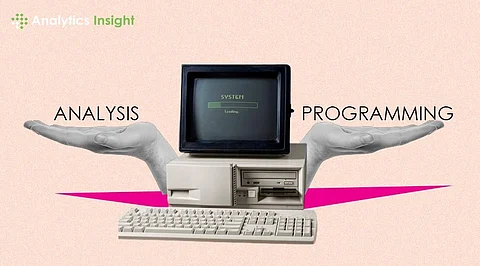
- Insights
- Cryptocurrencies
- Stocks
- White Papers
- Industry
- Geography
- Insights
- Cryptocurrencies
- Stocks
- White Papers
- Industry
- Geography


Data science has emerged as one of the most sought-after fields in recent times, with its potential to unlock valued insights from vast amounts of data. Aspiring data scientists often wonder which skill is more crucial: analysis or programming. While both are essential components of the data science toolkit, this article will explore the relative importance of analysis and programming in the field, shedding light on their exclusive roles and contributions.
The Power of Analysis: Data analysis forms the cornerstone of data science. It involves examining raw data, identifying patterns, and extracting meaningful insights. Skilled analysts own a deep understanding of statistical techniques, data visualization, and domain expertise. They are proficient in using tools like Excel, SQL, and Python libraries such as Pandas and NumPy.
Analytical skills are crucial for understanding the problem at hand, selecting appropriate methodologies, and interpreting the results accurately. Analysts translate complex data into actionable recommendations, enabling businesses to make informed decisions. Their skill to identify trends, detect anomalies, and uncover hidden patterns sets the foundation for successful data-driven strategies.
The Role of Programming: Programming skills are equally important in data science, as they enable data scientists to manipulate, clean, and transform data efficiently. Proficiency in software design languages such as Python, R, and SQL is essential for data wrangling, model building, and automation. Programming skills empower data scientists to leverage machine learning algorithms, build predictive models, and deploy solutions at scale.
By writing clean and efficient code, data scientists can expedite data processing tasks, improve model performance, and automate repetitive processes. Programming skills also enable collaboration, as data scientists can share code, reproduce results, and work in teams effectively. As data science projects often involve large datasets and complex algorithms, programming expertise ensures scalability and robustness.
The Synergy Between Analysis and Programming: While analysis and programming are distinct skills, they are not mutually exclusive. In fact, the synergy between the two is what propels data science forward. Effective analysis requires programming skills to preprocess, manipulate, and analyze data efficiently. Conversely, programming skills are most valuable when used in conjunction with analytical insights to build accurate models and derive meaningful conclusions.
Data scientists who possess a strong foundation in both analysis and programming are more likely to excel in their work. The ability to blend analytical thinking with technical expertise allows them to approach problems holistically, leading to better outcomes. Moreover, continuous learning and upskilling in both areas ensure that data scientists stay well-informed of the latest tools, techniques, and developments in the field.
In the realm of data science, the debate between analysis and programming often arises. However, it is essential to recognize that both skills are indispensable for success. Effective data analysis uncovers insights that drive decision-making, while programming enables data scientists to manipulate and model data efficiently. The synergy between analysis and programming forms the backbone of data science, allowing professionals to navigate complex datasets and develop innovative solutions.
